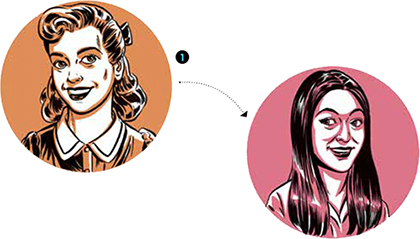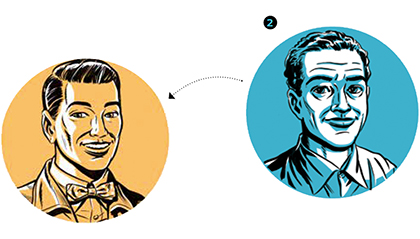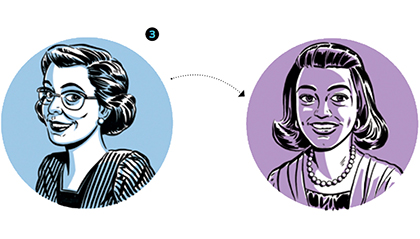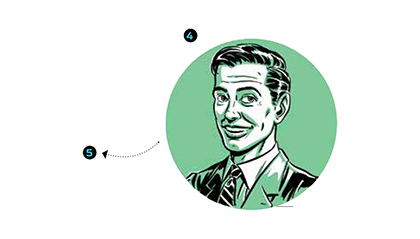Discoveries
Chain Links
Oct 25, 2017 Cedars-Sinai Staff
It’s well-known that the number of kidney donors falls far short of the number of people in need of a kidney transplant. What’s less known is an extraordinary pay-it-forward solution to the shortage that involves a chain of Good Samaritans and makes it possible for more men and women on the waitlist to receive a new organ. It is particularly helpful to highly sensitized patients, who are very difficult to match and whose antibodies cause them to reject organs from most donors. It all starts with a humanitarian donor who sets off a series of transplants. Here’s an example of how it can work:

1. Jane, an altruistic donor, generously gives one of her kidneys to a stranger.

2. Jane’s kidney is a match for Maria. Maria’s brother John — who wanted to give his kidney to his sister but is not a match — donates his organ instead to Benjamin, a match on the transplant waitlist.

3. Benjamin’s wife, Katherine, pays forward her own living kidney and is linked with a stranger on the waitlist named Valentina.

4-5. Valentina’s best friend, Franco, would have given Valentina his kidney, but it’s not compatible. He decides to give his kidney to another mismatched duo.
Cedars-Sinai recently completed its longest chain on record, which involved six people (three donors and three recipients). The longest kidney transplant chain in the U.S. involves an incredible 74 donors and 74 recipients — a total of 148 individuals from 12 states — who all underwent surgeries at the University of Alabama at Birmingham Hospital. What’s even more astonishing is that this chain is ongoing, with no end in sight.
Good to know: Less than one-third of transplanted kidneys in the U.S. come from living donors, and they are especially sought-after because they typically last longer than organs from deceased donors.


